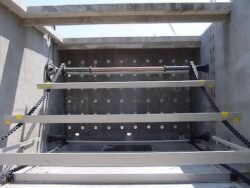Suction Clarifiers
Understanding Suction Clarifiers: An In-depth Exploration
In the world of water treatment and wastewater management, various technologies are employed to ensure the effective removal of impurities and suspended solids. Among these technologies, suction clarifiers play a pivotal role. Often utilized in water treatment plants and industrial processes, suction clarifiers contribute to achieving cleaner effluent by facilitating the sedimentation process. This article delves deep into the mechanics, applications, advantages, and considerations surrounding suction clarifiers.
I. Introduction to Clarification in Water Treatment
Before we delve into suction clarifiers, it’s essential to understand the broader concept of clarification in water and wastewater treatment. Clarification is the process of removing suspended solids from water through gravity settling. As a primary treatment stage, it sets the stage for further processing, ensuring downstream equipment and processes function effectively and efficiently.
A. The Need for Effective Clarification
-
- Protection of Downstream Processes: By removing excess solids, clarification protects subsequent treatment phases, such as filtration and disinfection.
-
- Regulatory Compliance: Tightened environmental regulations necessitate the efficient removal of turbidity and suspended particles to meet discharge and water quality standards.
-
- Resource Recovery: Some clarifier systems allow for the recovery and reuse of settled material, which is particularly valuable in industrial applications.
II. Suction Clarifiers: An Overview
Suction clarifiers are a type of gravity clarifier designed with a unique sludge removal mechanism. Unlike traditional models that often rely on rakes or scrapers, suction clarifiers use a hydraulic vacuum to enhance sludge removal efficiently.
A. Design and Operational Principles
-
- Structure and Components:
-
- Inlet Zone: Raw water enters the clarifier, where initial pre-treatment may occur.
-
- Clarification Zone: As water flows through this zone, suspended particles settle to the bottom under the influence of gravity.
-
- Suction Removal Mechanism: A set of rotating suction headers or pipes at the tank bottom removes sludge, driven by hydraulic pressure differences.
-
- Structure and Components:
-
- Mechanism of Particle Settlement:
-
- Gravity Settling: Settling velocity and particle size play crucial roles in sedimentation efficiency.
-
- Zone Settling and Compression: Within large-scale suction clarifiers, zone settling and particle compression increase separation effectiveness.
-
- Mechanism of Particle Settlement:
B. Types of Suction Clarifiers
-
- Central Drive Suction Clarifiers: Equipped with a central drive mechanism and commonly used in municipal water treatment settings.
-
- Peripheral Drive Suction Clarifiers: These clarifiers utilize a peripheral drive and are suitable for larger tank designs.
-
- Other Variants: Innovations in clarifier technology have led to hybrid designs combining elements from different types to enhance performance.
III. Applications of Suction Clarifiers
Suction clarifiers are versatile and cater to a broad range of industrial and municipal applications due to their efficacy and adaptability.
A. Municipal Water Treatment
In public water treatment facilities, suction clarifiers serve a crucial function in removing turbidities, aiding in the production of potable water. Effective clarification ensures that downstream filtration is more efficient and reduces the need for additional chemical interventions.
B. Wastewater Treatment
-
- Industrial Effluent Treatment: Industries such as pulp and paper, textiles, and food processing rely on suction clarifiers for effluent treatment to meet regulatory discharge standards.
-
- Sewage Treatment Plants: They play a vital role in secondary treatment processes by reducing biological load before further treatment steps.
C. Specialized Industrial Applications
-
- Mining Operations: They facilitate the removal of particulate matter, enhancing water recovery and reuse in mining processes.
-
- Power Plants: Cooling and process waters in power generating facilities benefit from the effective solid-liquid separation provided by suction clarifiers.
IV. Advantages of Suction Clarifiers
Suction clarifiers offer numerous benefits, making them a preferred choice in various applications.
A. Efficient Sludge Removal
-
- Hydraulic Suction Mechanism: The hydraulic vacuum mechanism allows for continuous, effective sludge removal without the need for mechanical scrapers, reducing maintenance requirements.
B. Improved Settling Efficiency
-
- Hydraulic Optimization: Suction clarifiers are designed to facilitate optimal flow patterns that enhance particle settling rates and clarify water more efficiently than traditional clarifiers.
C. Cost and Energy Efficiency
-
- Lower Operational Costs: By minimizing the need for mechanical parts like rakes, these systems reduce the likelihood of mechanical failures and maintenance costs.
-
- Energy Conservation: Typically, they require less energy than mechanical clarifiers, contributing to the overall energy efficiency of a treatment plant.
D. Flexibility and Scalability
-
- Adaptable Design: Suction clarifiers can be designed and scaled according to specific site conditions and treatment requirements, providing significant operational flexibility.
V. Considerations and Challenges
While suction clarifiers offer distinct advantages, there are considerations and potential challenges that operators and engineers must keep in mind.
A. Space and Infrastructure Requirements
-
- Footprint Considerations: Depending on the design and capacity, some suction clarifiers may require significant installation space, which could pose challenges in constrained environments.
B. Sludge Handling and Disposal
-
- Disposal Protocols: Effective management of removed sludge is critical for operational efficiency and environmental compliance, requiring appropriate handling and disposal strategies.
C. Initial Capital Investment
-
- Cost Concerns: The initial investment for suction clarifier systems can be significant. However, lifecycle cost analysis often justifies the investment due to operational savings and efficiency improvements.
D. Technical Expertise
-
- Personnel Training: Adequate training and expertise are required for operation and maintenance to ensure optimal performance and longevity of the system.
VI. Future Trends and Innovations
These clarifiers continue to evolve with advancements in technology and increasing demands for sustainability and efficiency.
A. Smart Technologies and Automation
-
- Integration of IoT and Sensors: Future designs may integrate smart technology for real-time monitoring and operation adjustments, enhancing automation and reducing human intervention.
B. Enhanced Material and Design
-
- Advanced Materials: The use of corrosion-resistant and durable materials is expected to enhance the lifespan and performance of suction clarifiers.
C. Focus on Sustainability
-
- Eco-friendly Designs: Development towards more sustainable designs that incorporate green technology solutions and focus on minimizing carbon footprint and energy usage.
VII. Conclusion
Suction clarifiers represent a vital component in the realm of water and wastewater treatment, bridging the gap between conventional sedimentation technology and the quest for efficiency and reliability in modern processing plants. Their unique design and operational principles offer significant advantages in terms of sludge removal efficiency, reduced operational costs, and flexibility. As technology advances and the demand for sustainable practices grows, suction clarifiers will likely undergo further refinement, adapting to the changing needs of industries and communities. Acknowledging their indispensable role in maintaining water quality and environmental compliance, the future looks promising for suction clarifier systems.



